On Turner Enterprises’ Spikebox Ranch
Enlarge
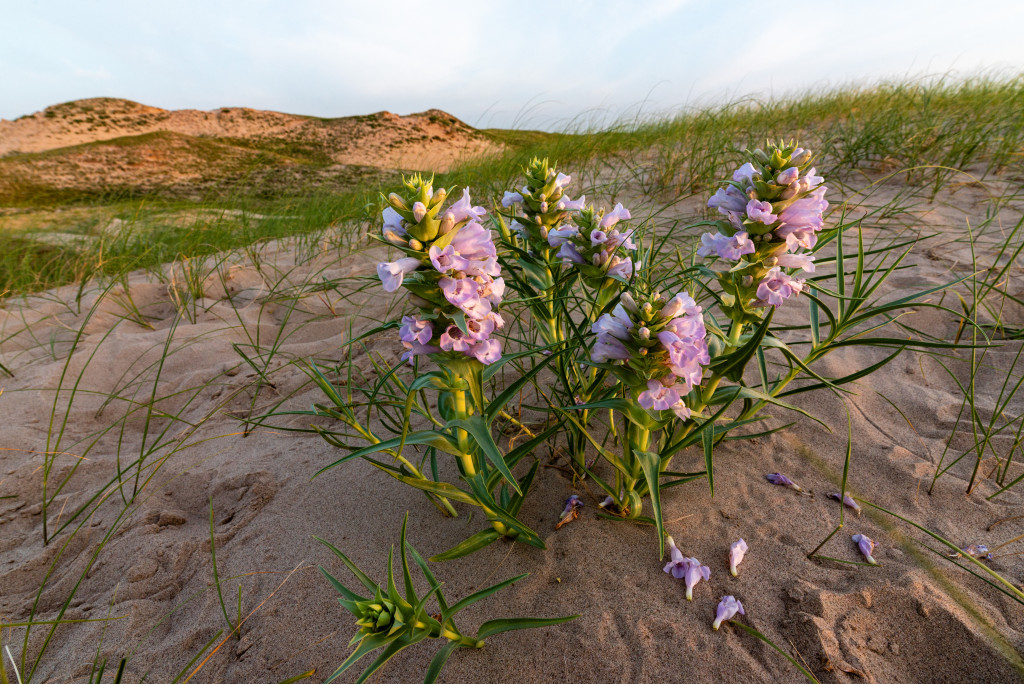
By Gerry Steinauer
“Blowouts are sort of like anchovies — you either love them or hate them,” wrote the late Nebraskaland writer Jon Farrar. Among the blowout lovers are “ranch children who for generations have slid down a blowout’s steep sandy slope [and] artifact hunters who currycomb them hoping to find an 11,000-year-old Clovis projectile point exposed by the wind.” Among the blowout haters are “Most ranchers [who] wage war on their blowouts. To some, they are seen as unsightly, maybe hint at poor range management such as overgrazing and as lost grazing. … To some ranchers blowouts are like dandelions in an urban lawn.”
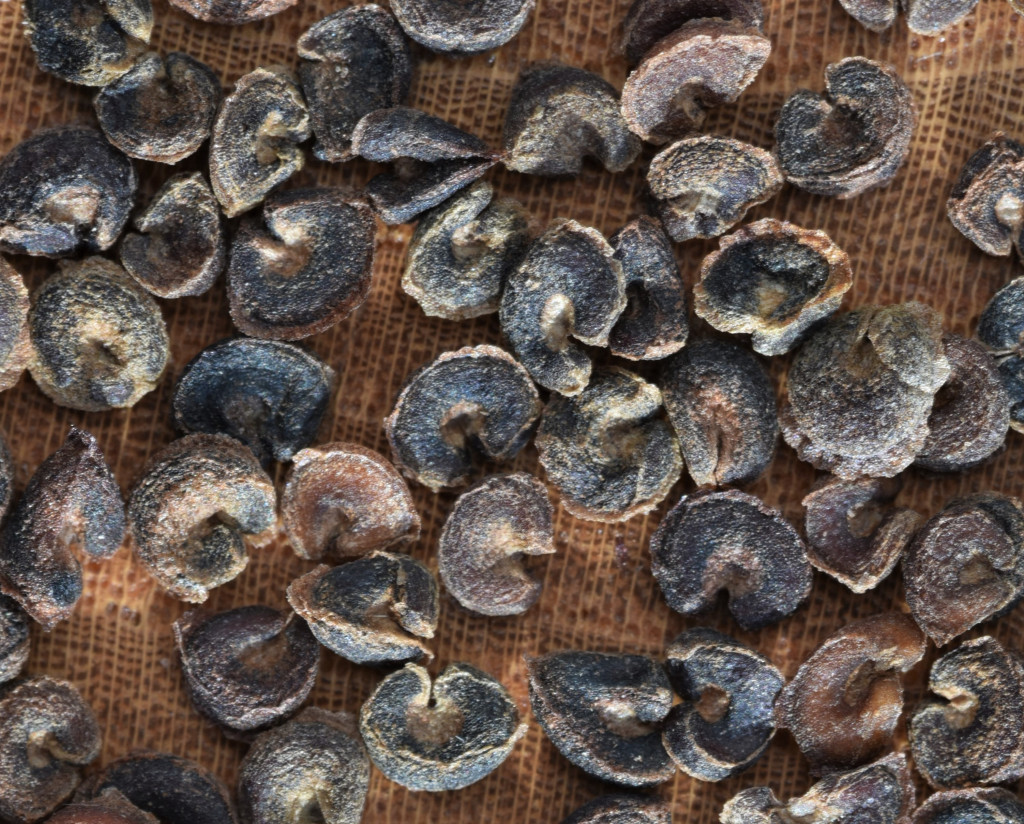
Blowouts are wind-excavated, bare sand depressions in Sandhills dune prairie and the sole habitat in our state for the endangered blowout penstemon (Penstemon haydenii). Since settlement, blowouts have become extremely rare, resulting in the penstemon’s decline. In 2017, Turner Enterprises, Inc., undertook a project to restore this rare plant in a pasture on their Spikebox Ranch located in Cherry County. Breaking Sandhills grazing tradition, they intensively grazed bison to create blowouts in which they, along with state and federal partners, planted blowout penstemon.
The project has been challenging to say the least. More than once during the planning phase, the partners stood gathered atop a high grassy dune, hands in pockets, boot heels worriedly scratching the sand, pondering how they could push bison grazing to the point where the sod-binding grasses lost their tight grip on the sandy soils, allowing the wind to set them to blowing. Also troubling was the thought of how neighboring ranchers would respond to their intentionally creating blowouts.
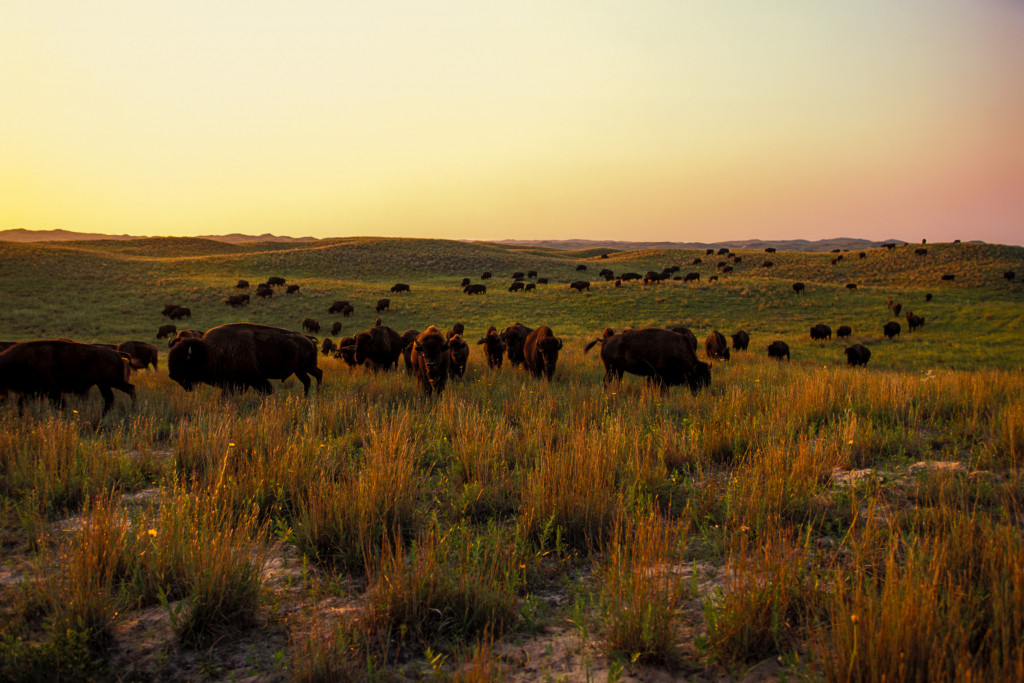
Despite the obstacles, the project appears to be on the road to success: This past summer, blowout penstemon flowered in the pasture, possibly for the first time in more than a century.
The Endangered Blowout Penstemon
Blowout penstemon grows in the Ferris Dunes in Carbon County, Wyoming, and the Sandhills of north-central Nebraska — and nowhere else on Earth. The species cannot tolerate competition from other plants, thus its predilection to grow on bare, mostly un-vegetated sand. A short-lived perennial, it often forms multi-stemmed clumps reaching up to 2 feet in height. Its pink to milky blue flowers, which have a sweet fragrance reminiscent of vanilla, grace the open sands from late May through June.
In the early 1900s, blowouts were abundant in the Sandhills, and a botanist described blowout penstemon as “one of the more common and typical species” of this habitat. At the time, perhaps millions of plants grew scattered across the dunes, but remarkably, by 1940, the plant was thought to be extinct. A wetter climate beginning in the early 1900s, coupled with settlers’ control of wildfires and their later use of conservative grazing practices with lower stocking rates and cattle rotated between pastures, had eliminated most blowouts.
Fortunately, blowout penstemon was re-discovered in 1968; however, surveys conducted through the early 1980s located only 600 plants. Soon thereafter, it was listed as federally endangered. By the mid-1990s, botanists had located a few thousand additional plants in the Sandhills and discovered the Wyoming population, consisting of about 8,000 plants.
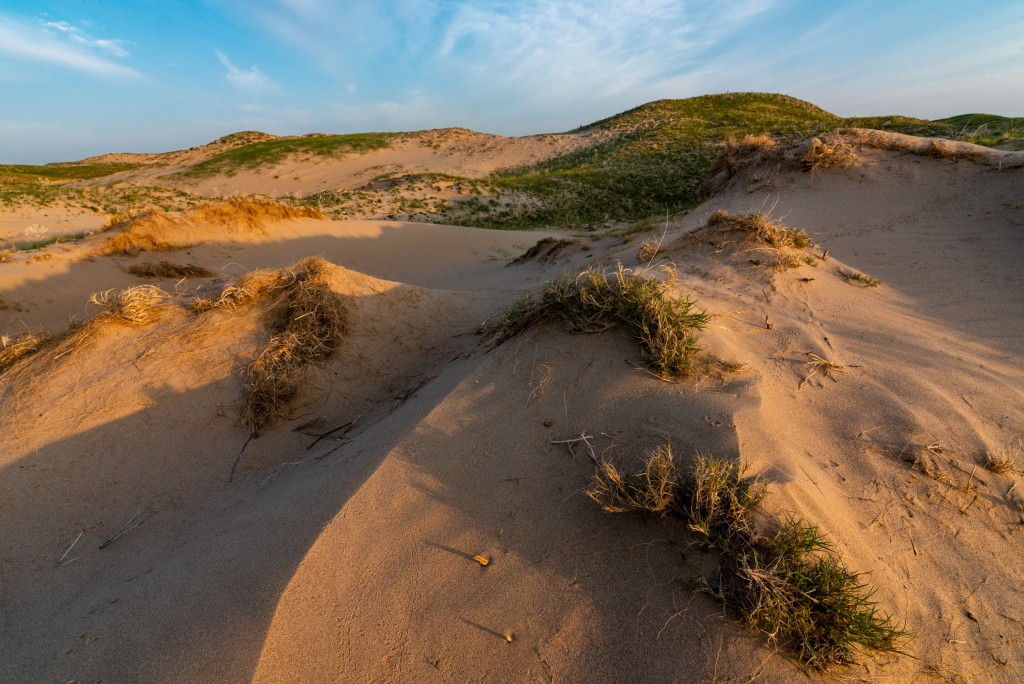
In the late 1980s, ecologists began planting greenhouse-grown blowout penstemon seedlings into blowouts on national wildlife refuges, national forests and private ranches in the Sandhills. At the time, establishing populations from seed was deemed infeasible due to lack of an abundant seed source. Plus, the hard-coated seeds were thought to take decades to germinate in the wild. In the greenhouse, seeds were acid-treated to break down the seed coat and stimulate germination.
Hand-planting greenhouse-grown blowout penstemon had limitations. Growing the seedlings was time-consuming and expensive, and many of the seedlings did not survive transplanting into blowouts. The greatest issue, however, was that most blowouts today are inactive with little blowing sand. Stable sands meant that over time prairie grasses and wildflowers invaded the blowouts and out-competed the planted penstemons, leading to their decline. Staff at the Crescent Lake National Wildlife Refuge in Garden County and other conservation lands tried to stimulate blowing sand by intensely grazing cattle and using heavy equipment to scrape grass off blowouts. These efforts mostly failed. If the blowout penstemon was to survive in the Sandhills, a practical method of creating and maintaining blowouts was sorely needed.
The Spikebox Ranch Project
On a summer day in 2016, I was with several Turner ranch managers and biologists on their 142,000-acre Spikebox Ranch. As we contemplated bison lazily grazing a high dune having a few scattered blowouts, our conversation naturally drifted to bison and blowouts. Based on years of observation, the managers suggested that if one was inclined to create blowouts through heavy grazing, bison might be better suited to the task than cattle.
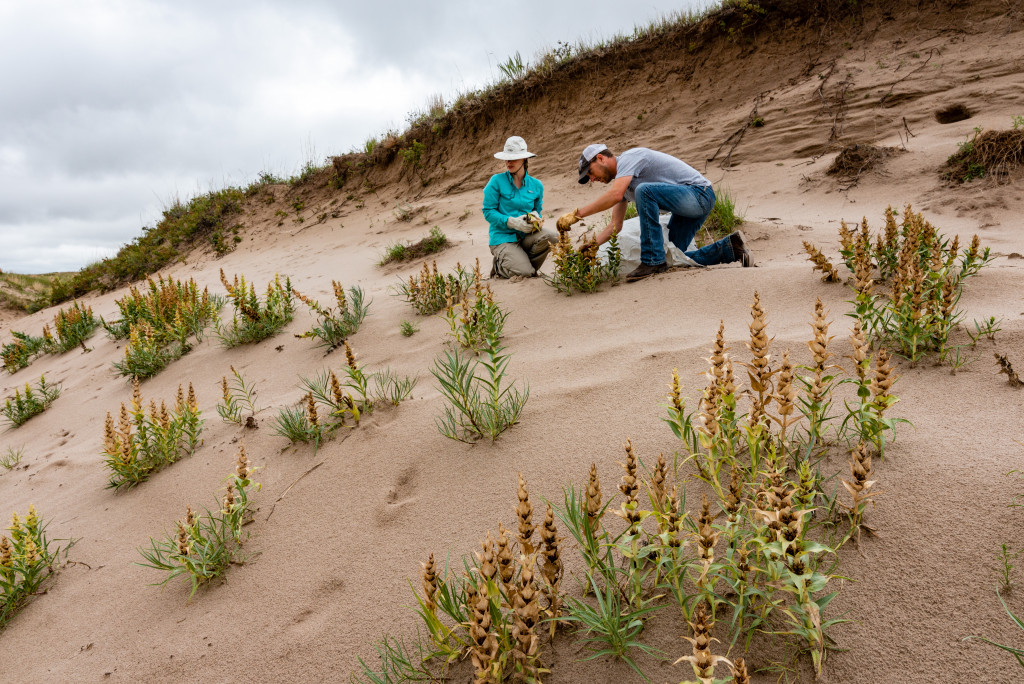
Greg Wright harvest blowout penstemon seed on the McKelvie National Forest. Gerry Steinauer, Nebraskaland.
They explained that unlike cattle, which favor low ground, bison prefer grazing and loafing on high dunes where blowouts tend to develop. On top the dunes, bison can scan for approaching predators and, with luck, they catch a breeze to ward off flies. Compared to cattle’s broad, flat hoofs, bison have sharp-edged hoofs that more easily cut through sod. The staff surmised that if a bison herd were confined to a pasture with high, loose-sanded dunes for an extended period, blowouts would likely develop.
I mentioned the blowout penstemon’s decline and its need for blowouts. The lead manager ran with the thought and by day’s end, we had a handshake agreement to intensively graze bison in a pasture on the Spikebox Ranch to create blowouts in which we would plant blowout penstemon.
By the following year, a plan was in place. A 250-acre section of the Hunt Pasture containing old, grassed-over blowouts was fenced to facilitate the project. The pasture’s size was thought to be small enough to allow bison, over time, to eliminate the grass cover and start the sand blowing. Key to choosing the Hunt Pasture was its central location on the ranch, so that if the blowouts slowly migrated in coming decades or centuries, they would stay confined to the ranch.
“Before we could start the project, there were issues we had to get our heads around,” said Carter Kruse, director of conservation for Turner Enterprises. “What were the ecological pros and cons? The production consequences? Fencing and water needs? And especially concerning for the then Spikebox manager, Terry Purdum, how do we keep bison in a near grassless pasture long enough to create blowouts without over-stressing them?”
Kruse said their biologists were excited about the project from the start; but Purdum, who is a member of the local cattle ranching community, was worried about how neighbors and friends would perceive Turner Enterprises for creating blowouts.
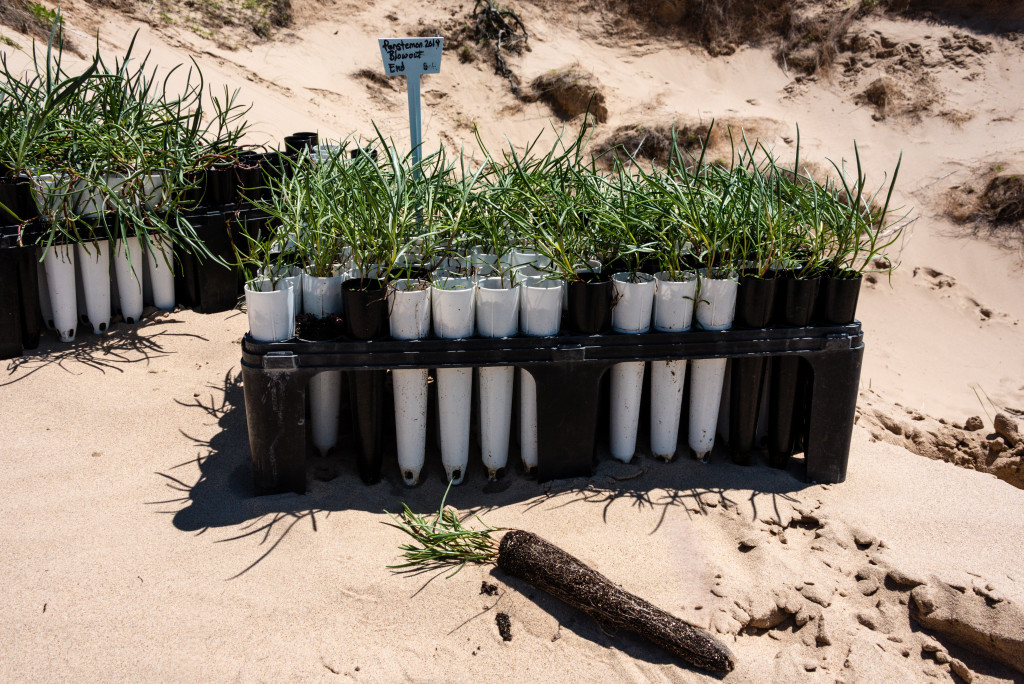
Partners in the Spikebox project included the U.S. Fish and Wildlife Service, the U.S. Forest Service and the Nebraska Game and Parks Commission, which all shared expertise in blowout penstemon ecology and restoration. The Forest Service donated penstemon seed harvested from populations on the Samuel R. McKelvie National Forest and grew penstemon seedlings for the project in a greenhouse at the Charles E. Bessey Tree Nursery at the Bessey Ranger District of the Nebraska National Forest near Halsey. The Fish and Wildlife Service and Game and Parks funded the growing of the seedlings.
“We appreciate the help of our conservation partners,” said Kruse. “Our ranches must fend for themselves financially, and partnerships help us implement our conservation efforts faster, at a larger scale and with a greater chance of success.”
In 2017, the modified Hunt Pasture was grazed for the first time. A herd of several hundred bison was kept in the pasture until little grass remained, at which time they were moved to other pastures. When grass returned, the bison were moved back. When forage was especially sparse, usually in winter, the bison were supplemented with hay and mineral that was strategically placed to force them to trail through forming blowouts in their journeys from food to water.
In the fall and winter of 2018 and 2019, the partners sowed a total of five pounds of penstemon seed in Hunt Pasture blowouts, and in May of 2019 and 2020, they planted several hundred greenhouse-grown seedlings in the blowouts.
The Penstemon Returns
Surprisingly, blowout creation in the Hunt Pasture was more difficult than anticipated because the project had taken place during several of the wettest years in recorded Sandhills history, which caused grass growth to outpace bison grazing. About half the pasture remains prairie-covered; in the remainder, however, grazing has stressed the deep-rooted grass and strong winds have sculpted the exposed sand into blowouts with bare sand slopes to their leeward side.
During the summer of 2021, Turner Enterprises’ ecologists surveyed the Hunt Pasture and found 60 flowering blowout penstemon plants and 40 seedlings. To flower, the penstemon must be at least two years old. The flowering plants were located in areas where seed was sown, but no greenhouse seedlings were planted. It appears that few, if any, of the greenhouse plants survived the winter of 2020-21; excessive blowing sand either uprooted or buried them. The partners have learned that in extremely active blowouts, the better approach to establishing the blowout penstemon is to scatter abundant seed and let nature decide when and where seedlings sprout and take hold.
Although fewer penstemon plants than expected have established in the Hunt Pasture, Greg Wright, a wildlife biologist with the Forest Service with extensive experience restoring the penstemon, remains optimistic. “I think we are seeing the beginning of an exponential growth curve for the penstemon population in the Hunt Pasture,” he said. Wright believes that there is a “sweet spot” for blowing sand — enough to scarify and then bury penstemon seeds to allow them to germinate, but not so much to cover or uproot seedlings.
Heavy grazing in the Hunt Pasture will continue for another year or two, until more blowouts are created, and this may prevent seedlings from flourishing. In the meantime, more penstemon seed will be sown, and once more blowouts are established, grazing will be reduced, slowing the movement of sand, and the penstemon will hopefully thrive. In the future, when prairie plants begin to move back into the blowouts, the managers will again use intensive bison grazing to re-initiate sand movement.

To date, Spikebox staff have received no negative comments regarding the Hunt Pasture blowouts, even though they are clearly visible from a county road. “I understand why ranchers have worked to reduce blowouts, but, in all honesty, we’re glad to have these blowouts back on the ranch,” said Kruse. “Blowouts are a vital part of the Sandhills ecosystem and could be important habitats for reptiles, insects and other organisms. We just don’t know.” He added that because the Hunt Pasture occupies a minute fraction of the ranch and that it continues to be grazed, the project has had no affect on the ranch’s bison production or economics.
Turner Enterprises has begun a second blowout penstemon project at their Fawn Lake Ranch, also located in Cherry County. This past winter, intensive bison grazing began in their 300-acre Hayden Pasture. Once open sand appears, blowout penstemon seed will be scattered. Greenhouse plants will not be used.
“This project is a unique challenge for me,” said Fawn Lake Manager John Halstead. “Such intense grazing to promote blowouts is a total paradigm shift from how the Sandhills have been grazed in recent history and is counter to everything I have been taught about range management. Still, I’m excited for the chance to work with such a special plant.”
The project partners hope that the Fawn Lake and Spikebox ranch projects will increase awareness of the blowout penstemon, encourage other ranchers to become involved in its conservation, serve as a model for future penstemon projects and, most critically, help ensure an endangered plant’s survival. ■
Sandhills Blowouts
Over millennia, grass cover on Sandhills dunes has waxed and waned in response to climate, grazing pressure and fire. About 8,000 years ago, for example, a 3,000-year-long mega-drought descended upon the Great Plains, withering the dune-stabilizing grass. The sands set to blowing, and Sahara-like naked dunes slowly rolled across the land. After the drought ended, vegetation re-stabilized the dunes.
By comparison, the 19th century was a period of relative dryness, with wildfires and roving bison herds still active on the land. The dunes were stable, but grass cover was sparse compared to today. J.H. Snowden of the 1857 Warren Expedition wrote that the dunes were “much broken by and cut by winds, supporting a very scant vegetation.” Blowouts were common in the Sandhills.
Euroamerican settlement of the Sandhills, which began in the late 1800s, brought dramatic changes to the landscape. Wildfires were extinguished quickly, the bison were extirpated, and, later, conservative methods of cattle grazing were implemented. These factors, along with a wetter climate beginning in the early 1900s, has led to dense grass on the dunes and to very few blowouts. The dunes are now at a level of stabilization where only extreme, prolonged drought would cause widespread blowouts.
Turner Enterprises’ Nebraska Ranches
Turner Enterprises, Inc., established by entrepreneur and conservationist Ted Turner, owns five Nebraska Sandhills ranches totaling 445,000 acres, on which they run 9,000 bison. Its ranches are managed primarily for Plains bison conservation and production, but also for hunting, fishing and conservation of imperiled species and plant communities. “We sometimes will compromise bison production for conservation, but overall our management is a balancing act,” said Carter Kruse.
Recently, the corporation formed the Turner Institute of Ecoagriculture, Inc., a public charity and agricultural research organization whose mission is to research, develop, practice and disseminate sustainable strategies and techniques for conserving ecosystems, agriculture and rural communities. This past June, the 80,000-acre McGinley Ranch, which straddles the Nebraska/South Dakota border, was the first of the Nebraska ranches to be donated to the Institute. Entry into the Institute ensures the long-term conservation of these biodiversity-rich grazing lands.
Although the Institute qualifies for tax exemptions, all taxes will continue to be paid and the lands will remain working ranches. “We’ll keep striving to be good neighbors and good stewards of the unique Sandhills landscape,” Kruse said.
Blowout Penstemon on McKelvie and Bessey
For more than two decades, the U.S. Forest Service has been reintroducing blowout penstemon on the Samuel R. McKelvie National Forest and the Bessey Ranger District of the Nebraska National Forest, both located in the Sandhills. Twenty-eight acres of active blowouts within the forests’ expansive dune grasslands now support roughly 30,000 penstemon plants. “Our livestock permit holders help us create small blowouts for the penstemon by manipulating their cattle to congregate near or trail to certain water tanks where the plant is growing,” said Greg Wright, a Forest Service biologist. “Private ranchers could use this method to restore the penstemon on their lands with no measurable loss of grass or grazing production.”
Before 2016, the McKelvie and Halsey penstemon populations were established using only greenhouse-grown seedlings. In that year, Wright, out of curiosity, scattered seed leftover from starting greenhouse plants, into a blowout on McKelvie. To his surprise, when he returned to the site the following summer, he found seedlings. Wright then harvested more seed and sowed it into other blowouts. Through this effort, he discovered that successful germination and seedling establishment depended on placing the seed in parts of the blowouts with extensive blowing sand. The sand’s abrasive action wore away the seeds’ hard coat, speeding germination.
Wright then evaluated the effectiveness of using seed versus greenhouse plants. He found scattering seeds was more cost effective in large blowouts and less reliant on a person’s knowledge of where exactly to place greenhouse seedlings to ensure their survival. He stressed that using seed works only in blowouts with active blowing sand and will not work in small, inactive blowouts, such as those found on many ranches. Wright’s discoveries have made large-scale blowout penstemon restorations, such as those occurring on the Spikebox Ranch, far more economically and ecologically practical.
“This is a plant we really need to conserve,” said Wright. “If extreme drought ever sets the dunes to blowing, seeding blowout penstemon might slow the dunes’ progress. It’s one of the very few plants adapted to growing on blowing sand.”
The post Restoring the Blowout Penstemon appeared first on Nebraskaland Magazine.
















